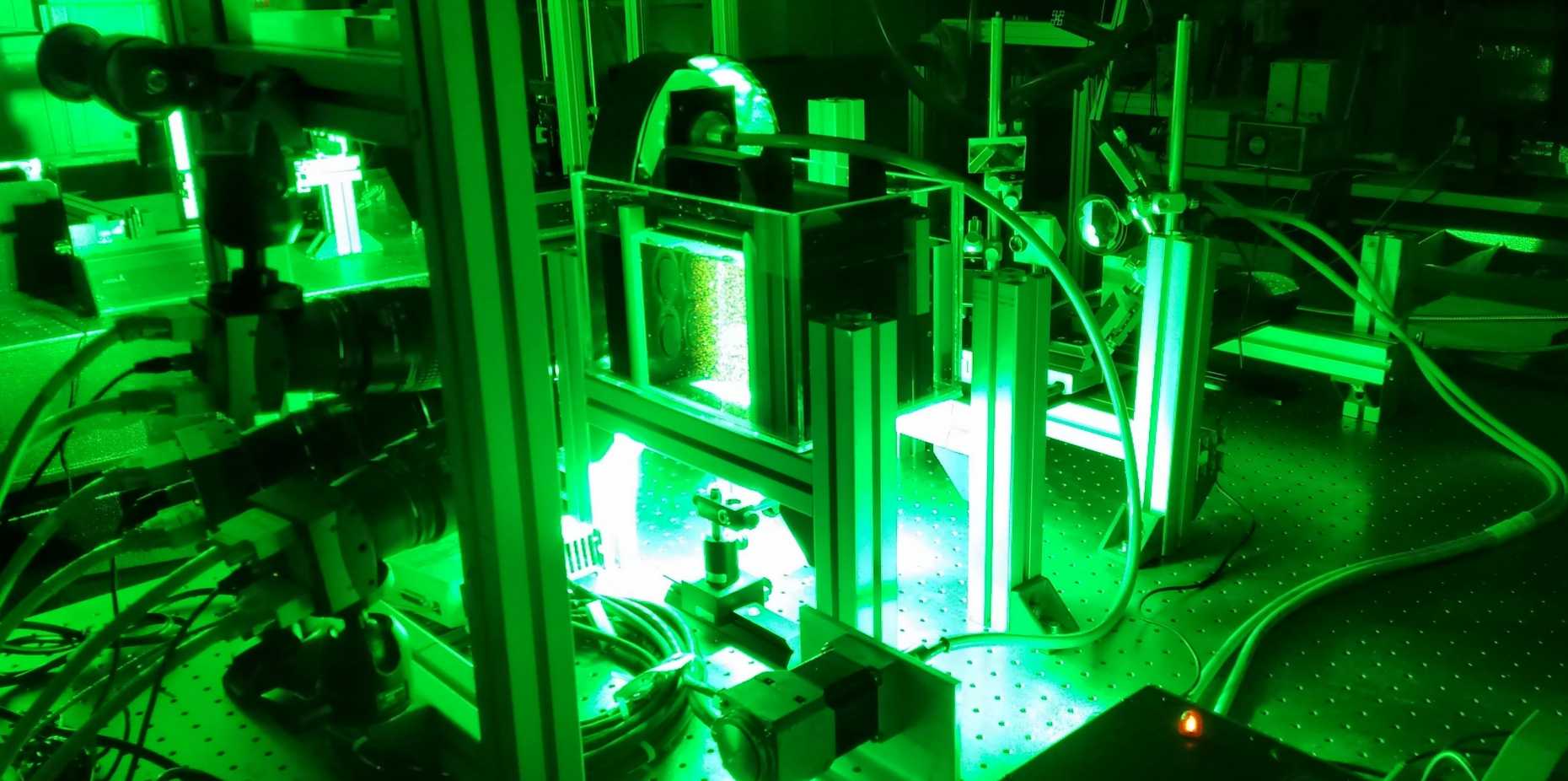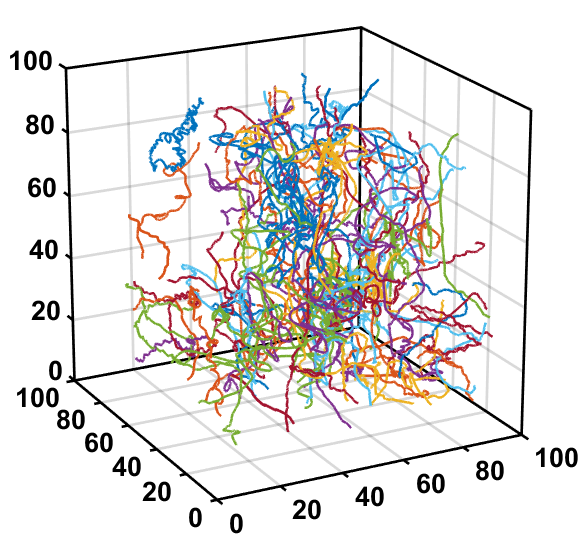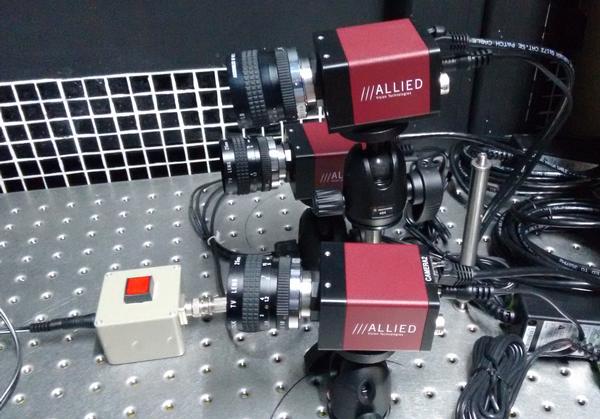Collective swimming behavior of zooplankton in turbulence
Calanoid copepods usually outnumber all other marine zooplankton and represent a major food source for planktivorous organisms such as fish larvae and Mysidacea. Their important role at the basis of the food chain has prompted great effort to better understand their ecology.
Because of their limited swimming abilities, calanoid copepods generally drift with the flow and follow the movement of water masses. But these small organisms are not totally passive. They swim actively to explore and exploit their environment and to interact with other zooplankters i.e. to escape from predators or to make contact with nearby conspecific organisms. Swimming behavior contributed much to the evolutionary success of calanoid copepods, and has attracted considerable interest from both the oceanography and the physical ecology communities. One reason for this interest is the complex interplay between their self-induced motion and the hydrodynamic features of the background flow. Another reason is the multifactorial relationship between their individual motion, best described at the scale of a few centimeters, and large-scale population behaviors, which occur over impressive distances and which seem disproportionate to the small size of these organisms and to their typical swimming velocity (on the order of a few millimeters per second). Such large-scale population features that originate from individual motion include for instance vertical migrations spanning tens of meters in the open ocean and in macrotidal estuaries, depth maintenance by vigorous swimming against upwelling tidal fronts, or accumulation along phytoplankton layers.
In relatively calm conditions such as those prevailing above the pycnocline in a stratified water column where turbulence is minimal, or during the tidal current reversal associated with the absence of flow in megatidal estuaries, the behavior of calanoid copepods can be relatively independent from the motion of the background flow. However, beside these particular cases, copepods spend most of their life in a turbulent environment. In turbulence, advection due to flow motion unsettles the innate kinematic and geometrical characteristics of their self-induced motion. Studying the interplay between flow and copepod swimming behavior is of considerable ecological importance but because of the difficulties of following their individual motion in three dimensions, such information has remained elusive.

Three-dimensional particle tracking velocimetry offers the advantage that it allows the fully-automatic processing of long sequences of stereoscopic images from which the position of a large number of particles and their trajectories in the three-dimensional space can be automatically recovered. The method allows observing several hundreds of copepods swimming simultaneously. Our group uses the hardware and software solutions developed at the Institute of Environmental Engineering to reconstruct the trajectories of copepods swimming freely in turbulence. We couple high-frequency recording with long recording durations for a reliable description of copepod kinematics. From the trajectories we obtain Lagrangian quantities of interest such as velocity, acceleration and motion complexity. We study the kinematic and diffusive properties of their motion in turbulence to better understand how these small animals perform in their natural environment, and how large-scale population features can arise from small-scale individual motion.

Behavioral toxicology is our second line of research. Calanoid copepods are attractive model organisms because of the sensitivity of their behavior to the physical and chemical features of their environment and because of the significance of self-induced motion in their ecology. We study how copepods react to the mixture of pollutants found in their environment, and how behavioral impairments affect ecological processes within the plankton community. We use both microscopy imaging and particle tracking velocimetry to develop new techniques that allow more realistic exposure conditions and an accurate quantification of behavioral impairments. Our current research focuses on behavioral alterations caused by manufactured nanomaterial at concentrations that are not considered toxic. Changes in swimming behavior may impair the ability of planktonic copepods to interact with their environment and with other organisms, with possible impacts on population dynamics and community structure. In this project, we collaborate with the external pageLaboratory of Oceanography and Geosciencescall_made (University of Lille 1, group of Pr. Souissi) which has implemented a three-camera particle tracking system. The recording duration is about five hours at one megapixel resolution and 60 frames per second. The system is composed of three AVT GE 1050 cameras that record on a SSD array.

